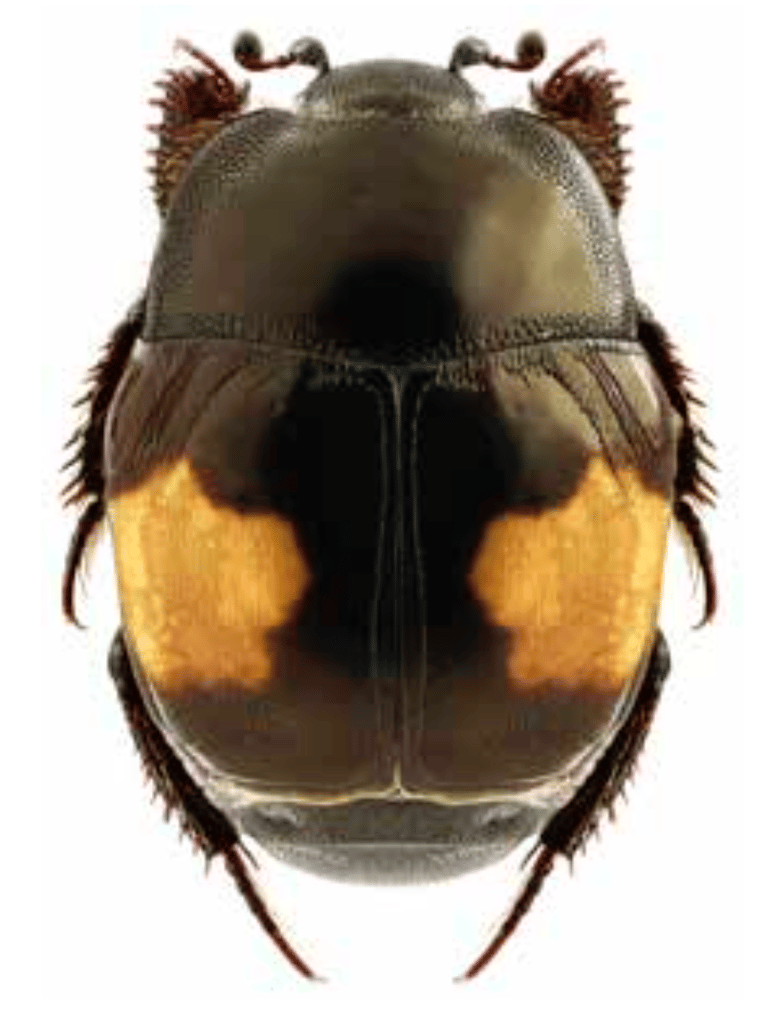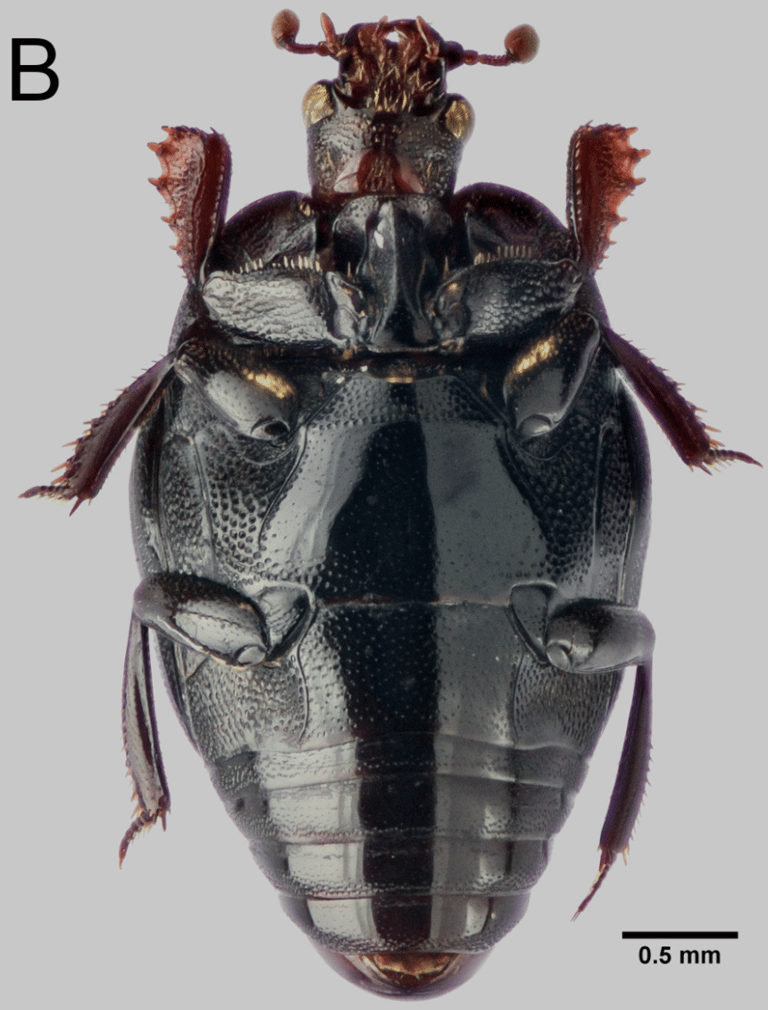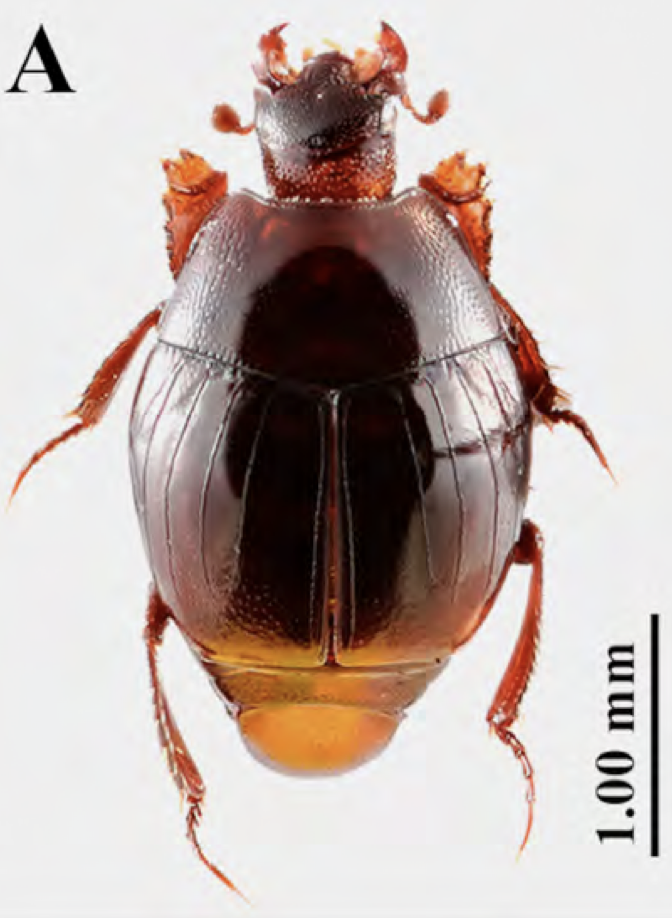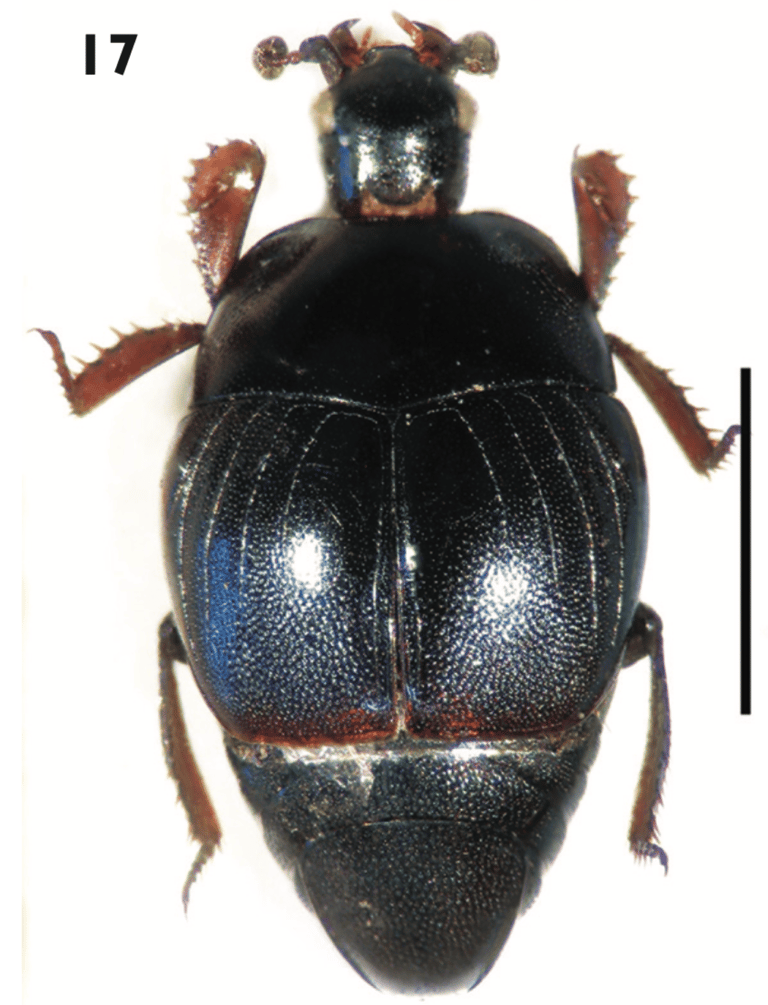Clown Beetles
Arriagada G, Jofré FN, & Aballay FH. 2019
Nueva especie de Euspilotus Lewis de Argentina (Coleoptera: Histeridae) [New species of Euspilotus Lewis of Argentina (Coleoptera: Histeridae)].
Revista del Museo Argentino de Ciencias Naturales 21, 7-15.
In this paper we describe a new species, Euspilotus (Neosaprinus) kovariki n. sp. (Histeridae, Saprininae), which was captured in bottle traps baited with chicken giblets, some of them located in the vicinity of anthills of Acromyrmex lundii (Guérin-Méneville) and others in absence of anthills. We include images of habitus, genitalia of both sexes, antenna, jaws, chin, maxilla and drawings of the male genitalia and a discussion about the biology of Euspilotus (Neosaprinus) kovariki n. sp. This species was registered at the Monte biogeographic province, in the central part of Argentina. The Monte is a warm desert with bushes that extends between the Puna and Patagonia east of the Andes.






Arriagada G, Dégallier N, & Aballay HF. 2023
Histeridae [Histeridae].
In: Biodiversidad de Artrópodos Argentinos. Volumen 6. Claps L E, Roig-Juñet S, & Morrone J (eds). San Miguel de Tucumán: Instituto Superior de Entomología “Dr. Abraham Willink” (INSUE); 306-315.
Histeridae are a family of the order Coleoptera that contains around 4,250 species worldwide distributed in 391 genera, except for the Antarctic region and Subantarctic islands, grouped into 11 subfamilies. In the Neotropical region, 139 genera and 1,047 species are represented. In the Argentinean territory, seven subfamilies, 63 genera and 156 species have been reported, of which 40 species are endemic to the country. This chapter summarizes the current state of knowledge of the family in Argentina. Taxonomic generalities, current classification, cited species, biological, forensic and economic aspects, and geographic distribution are included, in addition to general information on the entomological collections of Argentina that house specimens of Histeridae.
Arriagada G & Aballay HF. 2020
Descripción de un nuevo género y una nueva especie de Saprininae neotropicales (Coleoptera: Histeridae) [Description of a new genus and a new species of Neotropical Saprininae (Coleoptera: Histeridae)].
Revista Mexicana de Biodiversidad 91, e913333.
We describe a new genus and species of Saprininae: Paraeuspilotus monte n. gen., n. sp., which was captured in pitfall traps and in burrows of the native mouse Ctenomys mendocinus Philippi, 1869, commonly named tuco-tuco (Rodentia: Ctenomyidae). Paraeuspilotus monte was registered in the Monte biogeographic province, in Mendoza, Argentina. Figures of adult, and details of some external and internal morphological structures and genitalia of both sexes are provided. The biology and association with C. mendocinus are discussed.


Aballay FH, Arriagada G, Flores GE, & Centeno ND. 2013
An illustrated key to and diagnoses of the species of Histeridae (Coleoptera) associated with decaying carcasses in Argentina.
ZooKeys 261, 61-84.
A key to 16 histerid species associated with decaying carcasses in Argentina is presented, including diagnoses and habitus photographs for these species. This article provides a table of all species associated with carcasses, detailing the substrate from which they were collected and geographical distribution by province. All 16 Histeridae species registered are grouped into three subfamilies: Saprininae (twelve species of Euspilotus Lewis and one species of Xerosaprinus Wenzel), Histerinae (one species of Hololepta Paykull and one species of Phelister Marseul) and Dendrophilinae (one species of Carcinops Marseul). Two species are new records for Argentina: Phelister rufinotus Marseuland Carcinops troglodytes (Paykull). A discussion is presented on the potential forensic importance of some species collected on human and pig carcasses.